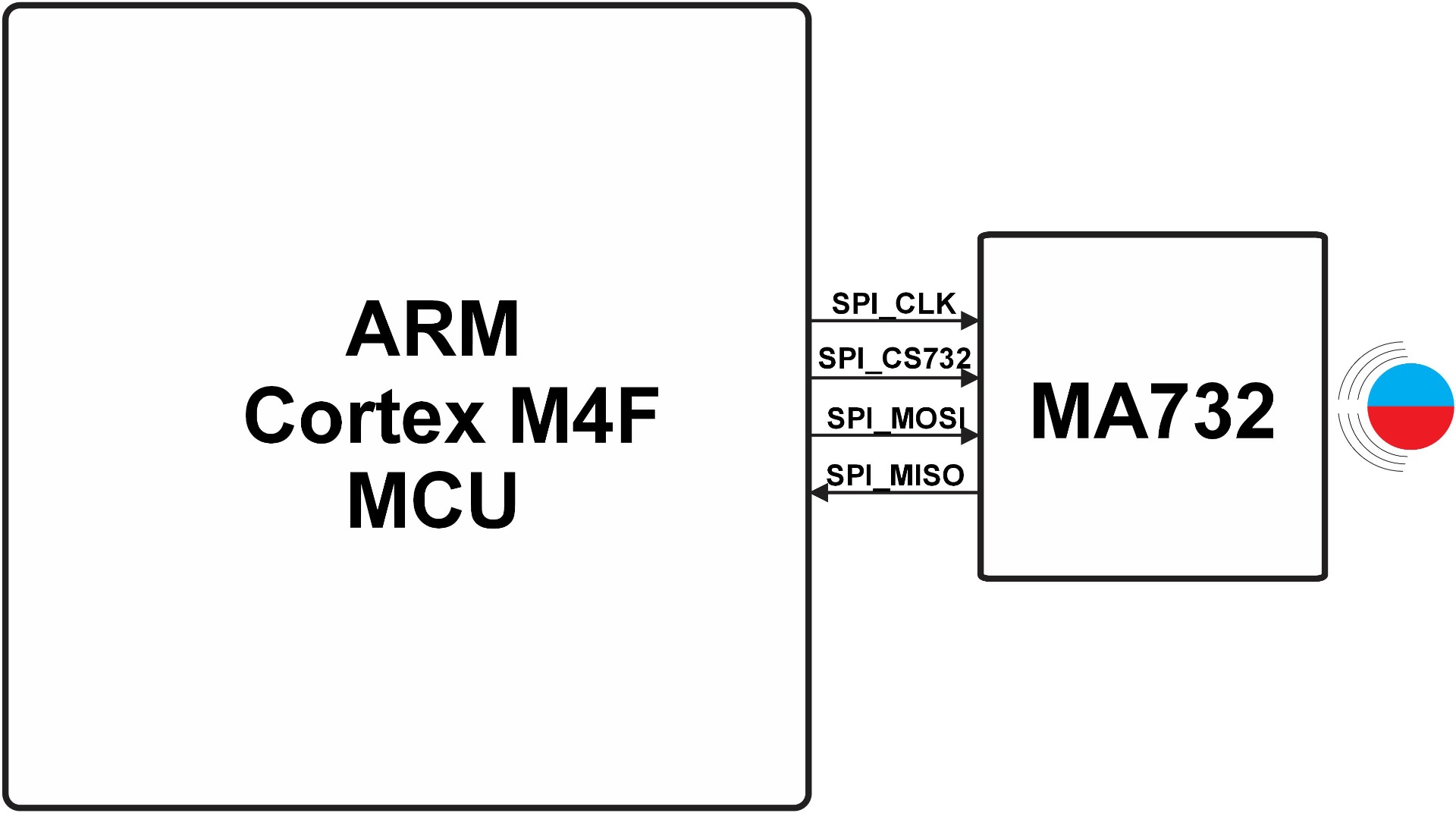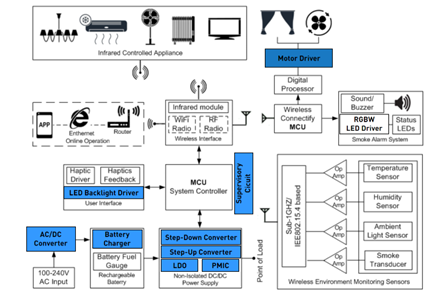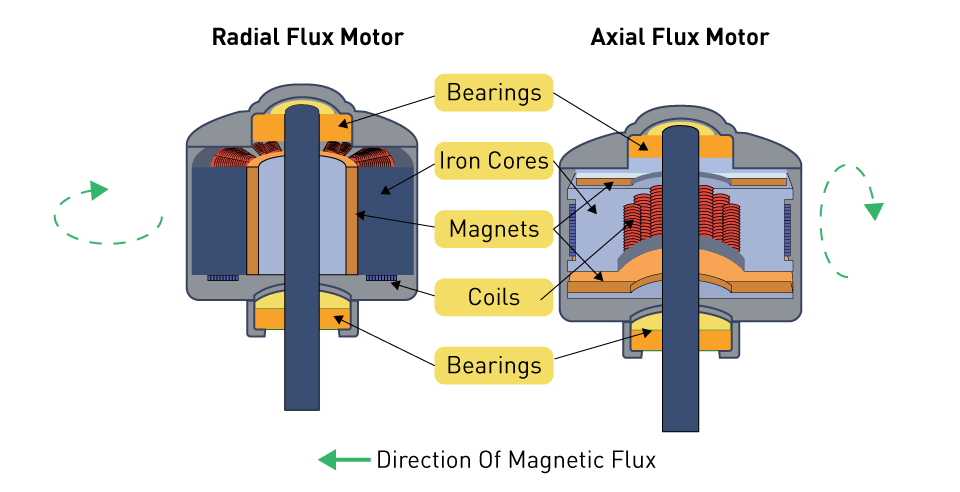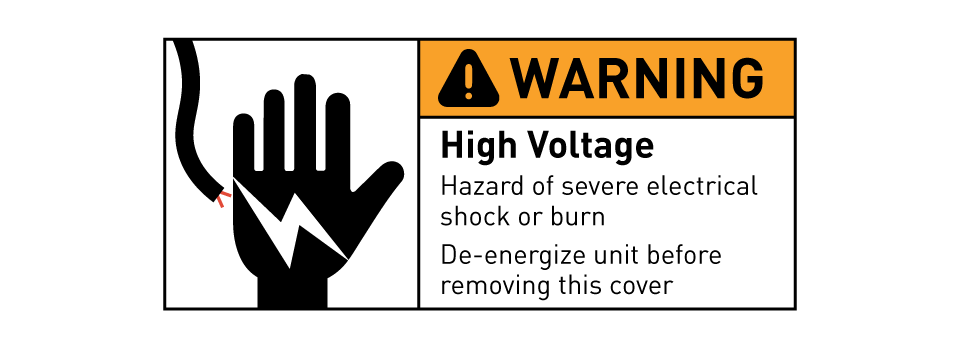Semiconductors in Motor Control Applications
The incorporation of semiconductor devices has caused a revolution in the field of motor control, resulting in new levels of precision, efficiency, and versatility. Semiconductors, the fundamental building blocks of current motor control circuits, enable sophisticated management of motor speed, direction, and torque for a wide variety of applications.
Types of Semiconductors Used in Motor Control
The most commonly used semiconductor devices in motor control include:
Transistors: Transistors, including MOSFETs and IGBTs, perform the function of switches to control the flow of current to the motor. Because of their capacity to switch quickly and successfully manage significant power levels, they are ideally suited for controlling the speed and direction of motors. Decisions between MOSFETs and IGBTs for motor control applications consider a number of criteria, including voltage, current ratings, switching frequency, efficiency, and cost. The following is an in-depth analysis of the benefits associated with MOSFETs, specifically silicon carbide (SiC) MOSFETs, in comparison to IGBTs.
Voltage and Current Ratings:
IGBTs: High-voltage applications (over 600 volts) typically favor inductively coupled bipolar transistors (IGBTs) because of their excellent current-carrying capability and ability to block high-voltage situations.
MOSFETs: When operating in lower voltage ranges (up to 600 volts), MOSFETs exhibit greater efficiency. SiC MOSFETs expand this range by offering better voltage and current capabilities than conventional silicon MOSFETs. As a result, SiC MOSFETs are appropriate for applications that demand both high power density and efficiency.
Switching Frequency:
IGBTs: While operating at high frequencies, IGBTs are characterized by sluggish switching rates and significant switching losses. Applications with frequencies up to a few tens of kHz typically function effectively in these types of applications.
MOSFETs: MOSFETs, which are characterized by their lower switching losses and quicker switching speeds, are particularly effective in high-frequency applications. With SiC MOSFETs in particular, it is possible to function at significantly higher frequencies (hundreds of kHz) in an effective manner. This results in a reduction in the size and cost of ancillary components such as inductors and capacitors.
Efficiency:
IGBTs: In general, in comparison to MOSFETs, IGBTs have a tendency to exhibit larger conduction losses at lower currents.
MOSFETs: There is a general tendency for MOSFETs to have decreased conduction losses, particularly at lower voltages, which results in an overall improvement in efficiency. The on-resistance and conduction losses of SiC MOSFETs are much lower at higher temperatures, which constitutes an additional enhancement to this feature.
Thermal Performance:
IGBTs: Although IGBTs can function well under high thermal loads, high-power applications may necessitate the use of extensive cooling solutions.
MOSFETs: SiC MOSFETs exhibit extraordinary thermal conductivity, enabling them to function at temperatures higher than those of silicon-based IGBTs or MOSFETs. This quality has the potential to reduce the need for cooling and increase dependability in difficult situations.
Cost:
IGBTs: For high-power applications, in general, IGBTs are more cost-effective than other options because of their maturity and extensive application in several industries.
MOSFETs: Silicon MOSFETs are a cost-effective option for applications that make use of less power. On the other hand, SiC MOSFETs are often more expensive than other types of MOSFETs because of the advanced material qualities and manufacturing techniques that they need. However, it is anticipated that prices will fall as both technology and production volumes continue to increase.
Application Suitability:
IGBTs: IGBTs are better suited for high-power applications such as electric car drivetrains, industrial motor drives, and inverters, which demand substantial amounts of voltage and power.
MOSFETs: Especially MOSFETs, particularly SiC MOSFETs, are particularly well-suited for applications that require efficiency, high switching frequencies, and thermal management. These applications include aircraft, electric cars, and renewable energy technologies, among others.
Diodes: Diodes are essential in circuits like freewheeling diodes, which guard against voltage spikes caused by motors in generator modes. Diodes primarily serve as an essential component due to their directional conductivity.
Thyristors: The modulation of the power that is given to the motor is accomplished by the use of thyristors, which are devices that are similar to silicon-controlled rectifiers (SCRs) and are used in phase control and soft start applications, notably in AC motors.
How Semiconductors Enhance Motor Control Capabilities
In order to improve motor control, semiconductor devices have various critical features, including the following:
Precision Control: In applications such as robots and CNC machines, precision control is achieved through the rapid switching capabilities of semiconductors. This allows for fine-tuned control over the operational parameters of the motor, such as speed and torque, which in turn facilitates smooth and accurate positioning.
Efficiency: Semiconductor devices are able to function at high frequencies with minimal losses, which enables efficient control systems like pulse width modulation (PWM), which can vary a motor's speed without wasting a substantial amount of power.
Protection: You can use semiconductors to create a variety of protection measures, such as thermal shutdown and overcurrent protection, to shield the control circuitry and the motor from potential damage.
Integration: Advanced semiconductor technology enables the integration of many control functions onto a single chip, reducing the size and complexity of motor control units. This integration helps to create motor drive solutions that are both compact and economical in terms of energy consumption.
Power Electronics and Motor Drives
One of the most important functions of power electronics in motor drives is to control and convert electrical power in an effective manner. This is accomplished through the utilization of semiconductor technology. The purpose of this part is to investigate the significant role that power electronic devices play inside motor drives, as well as the influence that improvements in semiconductor technology have had on the enhancement of motor drive performance and efficiency.
Role of Power Electronic Devices in Motor Drives
In motor drive systems, power electronic devices such as transistors, diodes, and thyristors play an essential role for a number of reasons, including the following:
Control and Modulation: Power electronic devices regulate the electrical power flow to motors. Modulation is also utilized in this process. Many methods, including pulse width modulation (PWM), utilize these devices to regulate the voltage and current delivered to the motor. This allows for exact control over the speed, torque, and direction of the motor.
Conversion: Applications that need the conversion between alternating current (AC) and direct current (DC) power, such as variable frequency drives (VFDs), are critical areas in which power electronics play a significant role. They use inverter topologies to make it easy to switch from alternating current (AC) to direct current (DC) and back again. This changes the power supply to meet the needs of different types of motors.
Protection: Overcurrent problem management, voltage spike prevention, and soft start capability facilitation are all examples of how power electronic devices help to protect motor systems. This safeguards the motor and increases the system's longevity.
Advancements in Semiconductor Technology for Improved Efficiency and Performance
The consistent development of semiconductor technology has resulted in substantial enhancements to the efficiency and performance of motor drives, including the following:
High-Efficiency Materials: The discovery of silicon carbide (SiC) and gallium nitride (GaN) semiconductors has resulted in the creation of high-efficiency materials. These materials offer improved efficiency, faster switching rates, and higher temperature tolerances than traditional silicon-based devices. Motor drives that are more efficient and have reduced energy losses are the result of this circumstance.
Miniaturization: Recent developments in semiconductor manufacturing have made it possible to create power electronic devices that are both more compact and integrated. For portable and space-constrained applications, it is critical that motor drive designs be compact enough to fit into tighter locations. This miniaturization makes it possible to create motor drives that are compact. These technological breakthroughs aid in the efficient management of thermal conditions and facilitate miniaturization.
Flip-Chip Technology:
Description: The flip-chip technology is distinguished by the process of mounting the semiconductor die in an inverted position in the package. This configuration allows direct connection of the chip's active region to the suitable cooling solution. This configuration greatly improves the dissipation of heat.
Advantages: The shorter path for heat to travel from the die to the heat sink has several advantages. This significantly improves thermal performance, which is essential for electronics that are densely packed. This design reduces the inductance and resistance of the interconnections, enhancing the electrical performance of the device and enabling it to function more efficiently at higher frequencies.
Multi-Die Integration:
Description: System-in-box (SiP) and three-dimensional integrated circuit integration are two examples of advanced packaging techniques that include stacking numerous dies into a single box. This reduces the device's footprint and enables the integration of heterogeneous technologies, including the merging of power and control circuitry.
Advantages: The advantages of these technologies include greater functionality within a smaller footprint, as well as improved thermal management through the novel utilization of inter-die thermal interfaces and materials that enhance heat conduction across the stack.
Enhanced Cooling Solutions:
Description: The inclusion of enhanced cooling solutions, such as microfluidic cooling channels directly within the package or the substrate hosting the dies, can further alleviate thermal concerns. This is in addition to the advanced die and packaging technologies that are now available.
Advantages: One of the advantages of these cooling systems is that they are able to manage the increased thermal density that is associated with shrinking. Their ability to preserve operational integrity and dependability without compromising performance is a significant advantage.
High Thermal Conductivity Materials:
Description: The use of materials with high heat conductivity, such as silicon carbide (SiC) and gallium nitride (GaN), in the semiconductor die itself represents this use. When compared to conventional silicon, these materials have the inherent ability to dissipate heat more effectively.
Advantages: The advantages of SiC and GaN include their ability to support operations at higher temperatures, as well as their ability to boost efficiency at high voltages and frequencies. This makes them perfect for applications that require high power and compactness.
Intelligent Control: Adding intelligent control features to semiconductors makes motor drives smarter. These drives have the ability to adapt to changing load conditions, instantly determine optimal efficiency levels, and utilize condition tracking to determine when maintenance is necessary.
Renewable Integration: Improvements in semiconductor technology have made it easier to connect motor drives to green energy sources. Motor drives can now manage variable inputs from sources like solar and wind more efficiently. This helps make green and sustainable energy options possible.
Integration of Semiconductors in Motor Control Systems
Since the addition of chips to motor control systems, electric motors have undergone significant change. This has led to a new era of efficiency, accuracy, and dependability. This section discusses the application of semiconductor technology in various motor control systems and its significant impact on their design.
Examples of Semiconductor-Based Control Systems in Different Motor Types
DC Motors: In DC motor drives, MOSFETs and IGBTs are semiconductor devices that use PWM to control the motor's speed and direction. These gadgets make it possible to quickly change the flow of current, which makes controlling motor activities smooth and effective.
AC Motors: Semiconductors are very important in variable-frequency drive (VFD) circuits for AC motors. VFDs use semiconductor switches to change the AC voltage from the wall into a variable frequency and voltage source. This enables precise control of the speed of AC induction motors.
Stepper Motors: In stepper motors, semiconductor-driven computers carefully control the order in which electrical pulses are sent to the motor coils. This precise control allows the motor to move precisely to a new spot, which is critical for 3D printers and CNC machines that require precise positioning.
Servo Motors: Power transistors in servo motor drives change the current and voltage going to the motor based on input from position sensors. This lets you precisely control the motor's position, speed, and acceleration.
Impact of Semiconductor Technology on Motor Control Design
Increased Efficiency: Motor control systems lose much less power now that they use more advanced semiconductor materials and devices. This means that they are generally more efficient and use less energy.
Compactness and Integration: Semiconductor technology has enabled the reduction of motor control systems, resulting in more integrated and compact designs. This reduction helps make motor systems that are smaller, lighter, and use less energy. These systems find application in a wide range of scenarios.
Enhanced Performance: Semiconductors' ability to switch on and off quickly and give exact control has greatly enhanced the performance of motor systems. Motors can now work at different speeds and torques, and they can start and stop more smoothly and with less mechanical stress.
Innovation in Motor Control Architectures: The development of semiconductors has sparked new concepts in motor control architectures, including the development of smart motor controllers that can monitor performance, anticipate when maintenance is required, and adapt to various working conditions.






直接登录
创建新帐号